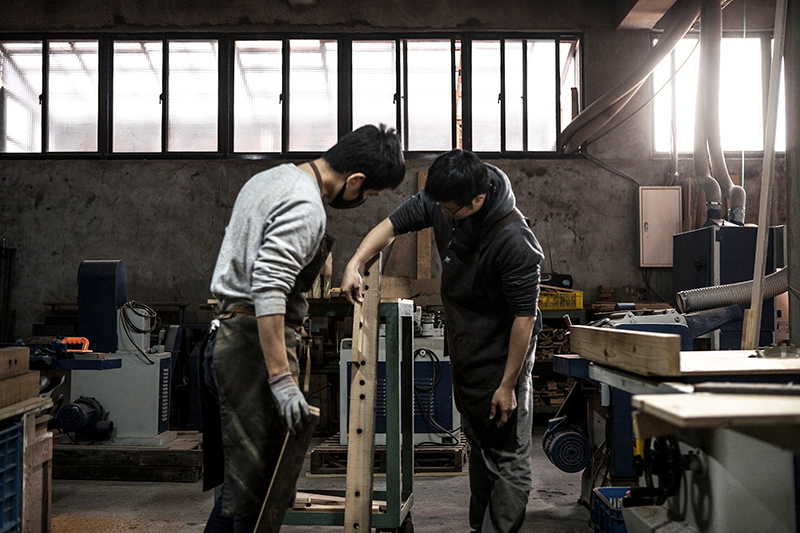台電透過輸電設備將電力傳送往每一個需要用電的場域,電線桿是電力網路的重要基本構成,而木橫擔則是承載各項設備架設於電線桿上重要骨幹。雖然隨著日新月異的輸電趨勢,已漸漸看不到林立於街邊的電線桿與交織在半空中的電纜線,更難得見到早期的木質電線桿與電桿上的木橫擔,但目前退役的木橫擔數量仍持續累積中。台電文創以電線桿上的木橫擔作為運用材料,為退役木橫擔,尋找再次被運用的機會,也希望台電能以不一樣的方式,參與你我的生活。「E010」是台電退役輸電設備「素材木橫擔」的編號,在商品開發時我們使用了這個編號,作為材料再利用的一個標章。
RETIRED WOODCROSSARM #E010
The company transmits power to every venue and location, and electricity poles are fundamental in power grids, and wooden Crossarms carry various equipment on these poles. As transmission technologies evolve, roadside poles and cables have become rare, and wooden poles and wooden Crossarms are even more uncommon now. Retired wooden Crossarms continue to increase. TPCreative utilizes wooden Crossarms for other purposes, and hopes Taipower can engage with our life in other ways. "E010" is the designation for repurposed wooden crossarms sourced from Taipower's retired transmission equipment. We incorporated this code into product development as a symbol of material reuse.


一根電線桿,除了矗立的水泥柱之外,還附掛了許多電力設施,電纜線、絕緣礙子,甚至是變電箱。這些設施自然無法憑空漂浮,全都裝設在橫擔上面依靠它來承載。橫擔,可說是電線桿的肩膀,站在電桿的肩膀上,電纜線可以通往更遠的地方,串起全台電網。
Electricity poles carry more than just concrete—they also support various electrical components like cables, insulators, and even transformer boxes. These installations don’t float in the air; they’re all mounted on Crossarms. These Crossarms act like the shoulders of power poles, allowing electricity lines to span great distances and interconnect Taiwan’s power grid.
早期除了電線桿之外,電桿上的橫擔大多也是以木材製作,挑選耐得住風吹雨打的樹種,細心考量木材的紋路進行裁切製作,為的是讓木橫擔能擔得起最重的重量,牢牢固定設備讓它們穩定輸送電力。
In earlier years, Crossarms on power poles were predominantly made from timber. Durable species were carefully selected for their resistance to wind and rain, and craftsmen studied wood grain to ensure proper strength and fit. These wooden Crossarms had to bear heavy electrical loads and keep systems stable and secure.
每根木橫擔服役動輒超過十年,時間在它們表面留下了難以仿製的印記,歷經風霜的刻劃,讓這些老木擁有獨特的紋理。沉穩、紮實,是我們最喜愛的材料特性,更羨慕的是,它們可以從高高的地方,擁有不同視野靜靜地看著這個世界。
Each wooden Crossarm typically served for more than a decade. Time etched unique, unreplicable patterns onto their surfaces. These aged timbers became not just functional but beautiful—marked with character and strength. We admire their enduring presence and imagine the silent vantage point they held, looking down from above.








